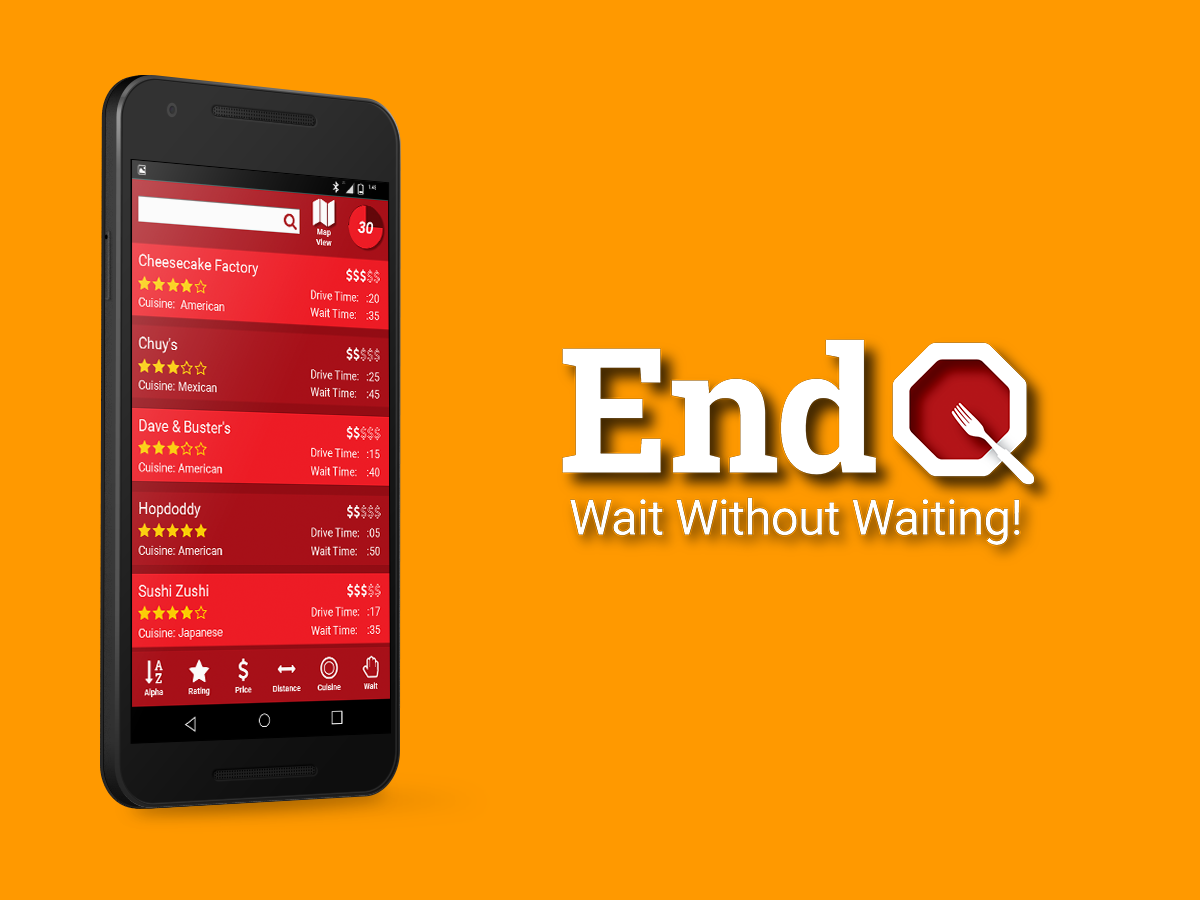

THE PROBLEM
A study by Ohio State University found 60% of restaurants fail within the first three years. At 5 years, that statistic reaches 80%. Annually, restaurants revenue loss is estimated at $14 Billion. Each of the studies cited several reasons as a potential cause for the estimated 36% customer defection rate restaurants see, so I decided to conduct a case study to look for potential solutions that would address any or all of the listed concerns and help with customer retention.
RESEARCH
Observational Study
The first step was to perform an observational study at a local eatery to get a feel for the environment. I created a log to understand as many of the interactions and observations over the course of 2 hours.
 The Queue
The Queue The Bar
The Bar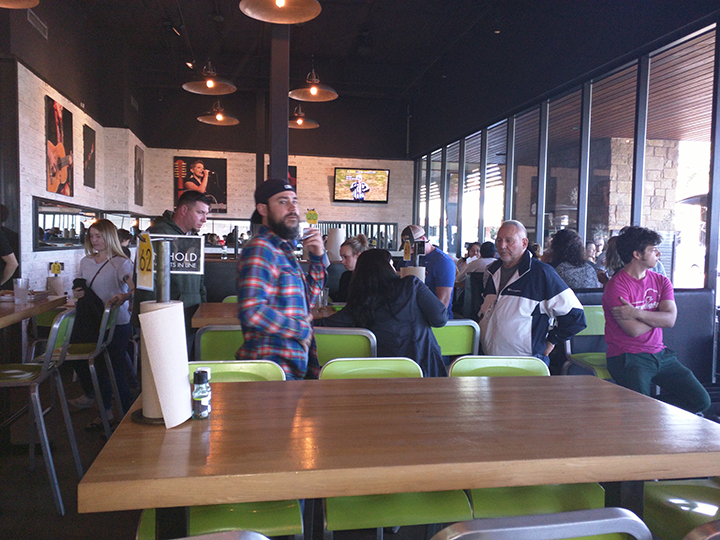 Seating Area
Seating AreaInterviews
Additionally, I conducted several interviews with patrons to generate a sense of what patrons thoughts and feelings about the establishment were.
 Interviews
Interviews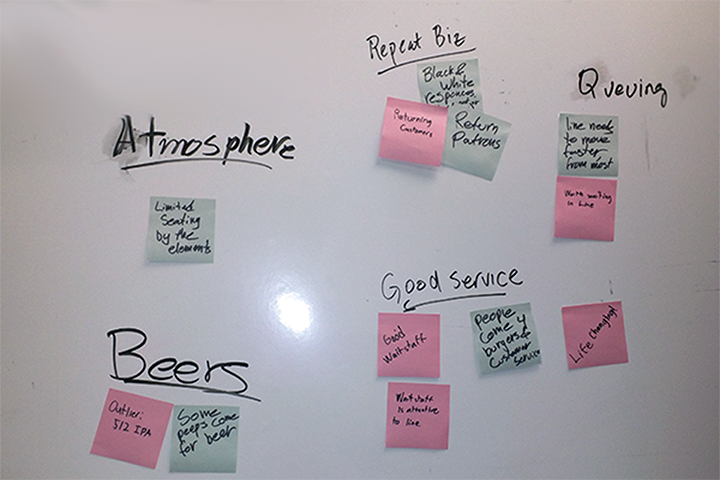 Interview Response Classification
Interview Response ClassificationPersona
Using the responses as a guide, I created a persona as a composite of the interviewees to address their comments, concerns, wants and needs.
 Composite Persona "Freddie"
Composite Persona "Freddie"
Characteristics
- 26 year-old
- Graduate student/new professional
- Driven to succeed
- Hates wasting his time
- Tech Savvy
Goals
- Focus on his job at an architecture firm
- Wants to socialize with friends/co-workers
- Wants to enjoy his accomplishments and life
“Graduated in May and got hired a few months ago. Finally got handed a project I'm having fun on so I'd rather be at the office instead of being stuck in this line.”
Insights
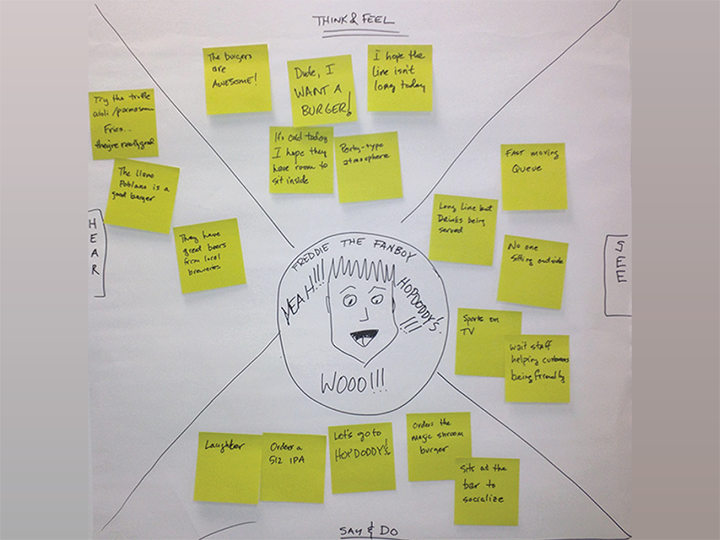 Empathy Map
Empathy Map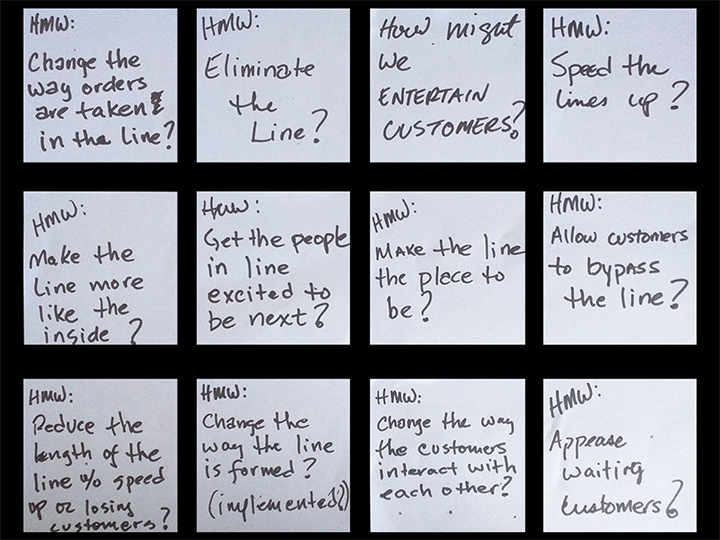 How Might We's
How Might We's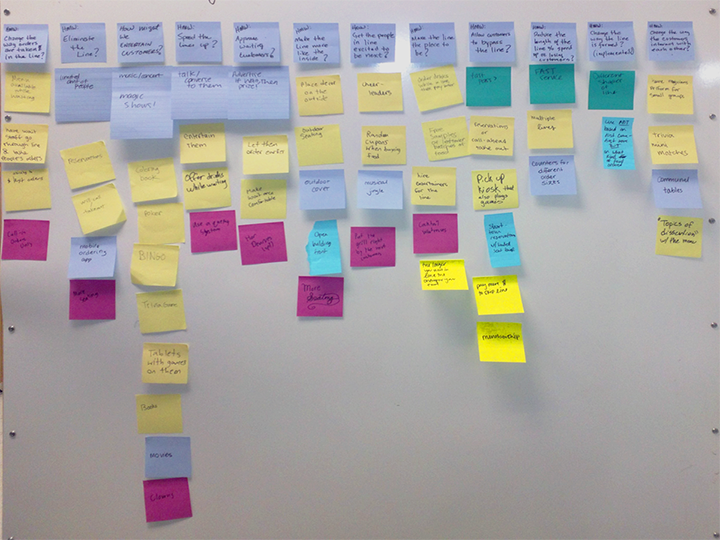 HMW Response Classification
HMW Response ClassificationUpon considering the persona’s thoughts, and revisiting the interviews, I realized that the patrons didn’t have a negative issue with any of the points of view considered. However, there was one area that seemed to trouble almost everyone - waiting.
I used HMWs to explore various ways to address the need to wait and collaborated with co-workers to come up with options to negate the wait. It became clear that three strong types of solutions were available:
- a structural prototype to demonstrate a change to the outdoor seating
- an entertaining experience-driven approach, with movies and trivia
- a mobile app involving orders or queuing in some way
While some ideas considered covered seating, to satisfy the physical prototype concept and entertainment, to satisfy the experience prototype idea, the most logical approach was some sort of digital prototype app to address queuing.
This was determined because neither seating or entertainment solves the issue of addressing the concept of having to wait, in general.
Solving the queuing problem can align the goals of the customer with those of the establishment by:
- Allowing patrons to regain lost time without having to give up on getting their food
- Preventing lost revenue
The idea also had merit because most restaurants will not allow reservations, but do have waitlists.
IDEATION
While considering options for the application, the method of notifying patrons that their table was ready via restaurant pagers became a central point of inspiration.
Conceptually, the app would be able to make use of the patron’s cell phone to allow them to put themselves on a waiting list without having to be present and still get the “buzz” notification.
Also, with the prevalence of cell phones, restaurants would be able to get rid of the devices and the need to recharge them but still allow patrons to join the waitlist, even remotely.
Iterations
A simple prototype was quickly sketched out on note cards to conduct usability testing in a paper prototype format.
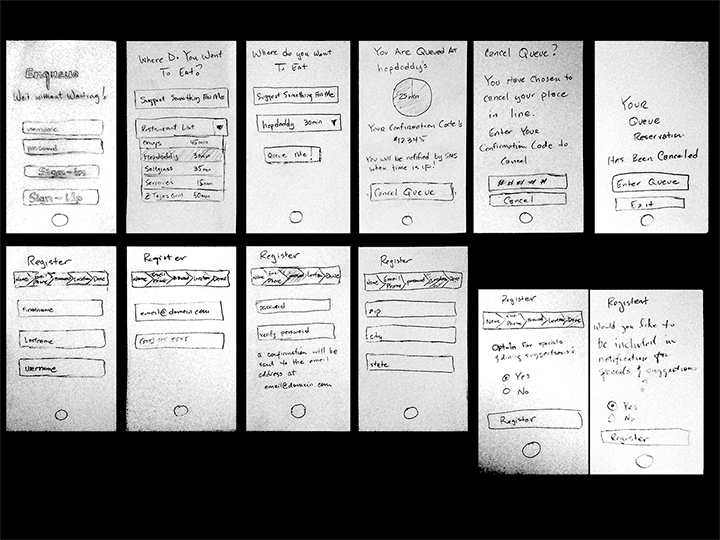 Prototype I
Prototype I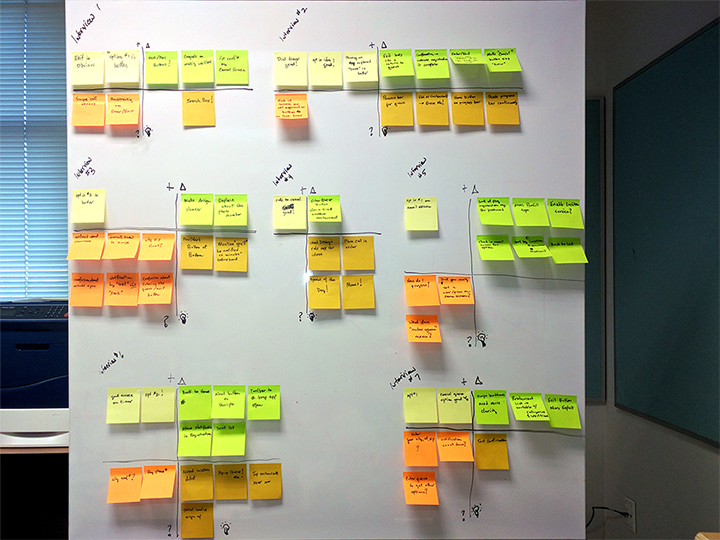 Usability Testing Reponses
Usability Testing Reponses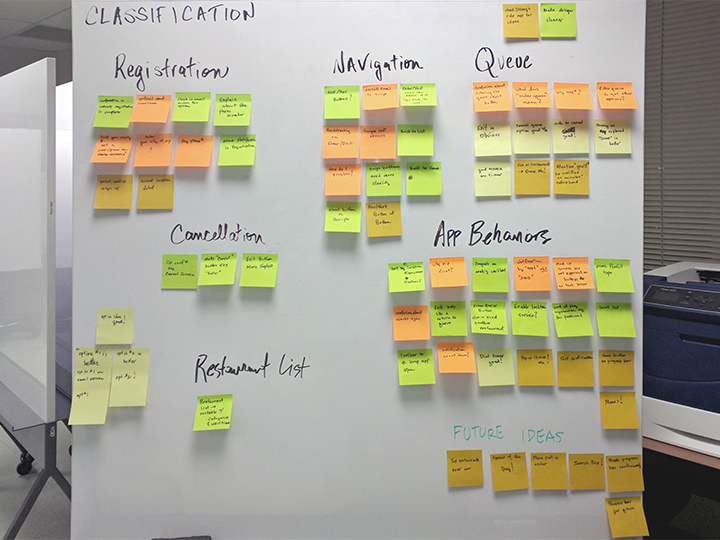 Response Classification
Response ClassificationIssues Identified
- Forced registration
- Navigation with from one page to another
- Queuing process and confirmation code
New Features
- adding a map, as well, as the list
- Sorting by several options
- an option to see the menu
Wireframing
After a few rounds of simple interation and usability testing, I proceeded to wireframing the app in Axure. Some information was condensed to save space, eliminate superfluous screens, and give a sense of interaction.
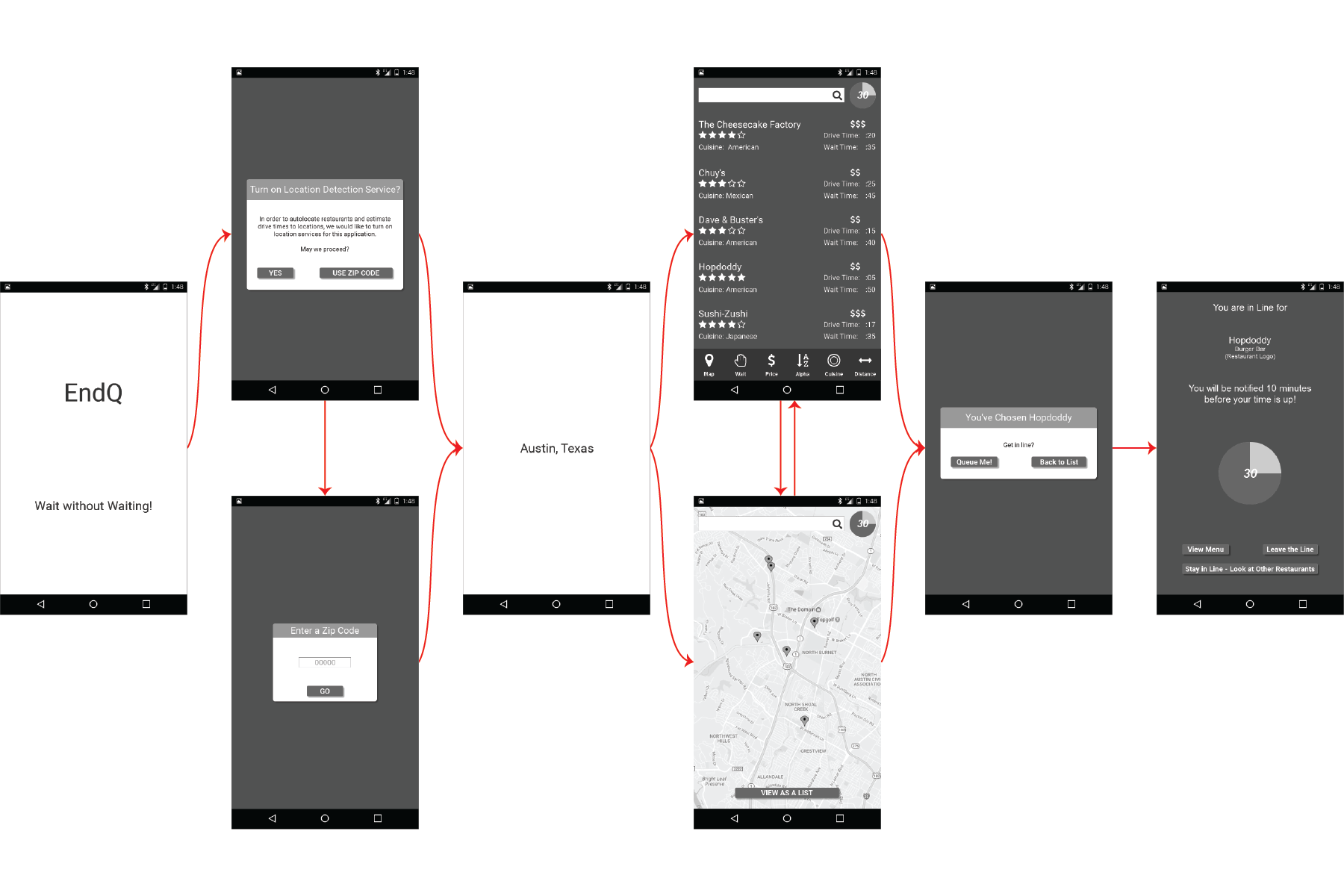 Axure Wireframes
Axure WireframesPROTOTYPE
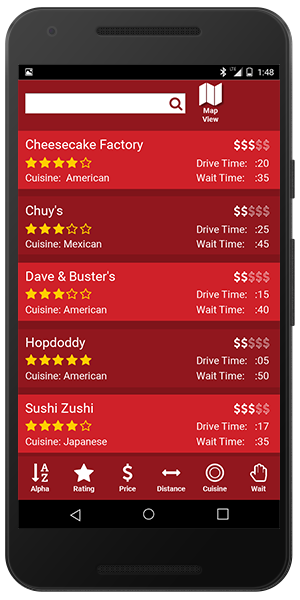
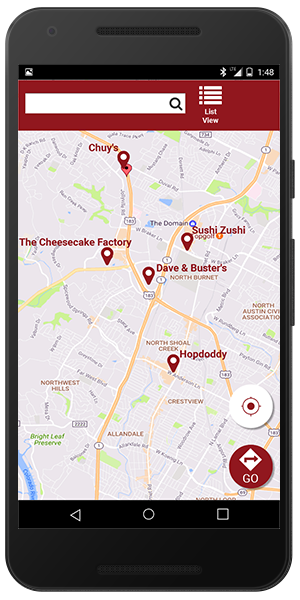
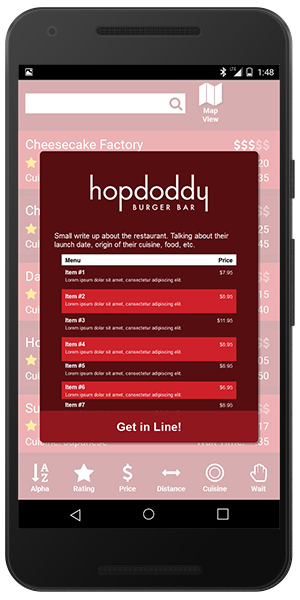
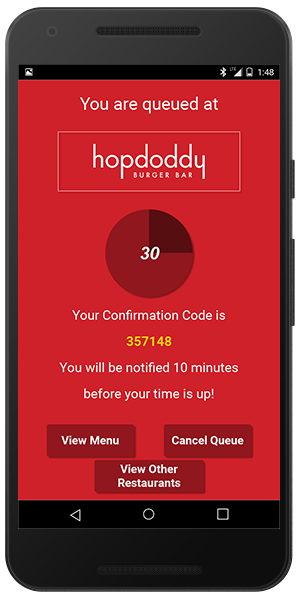
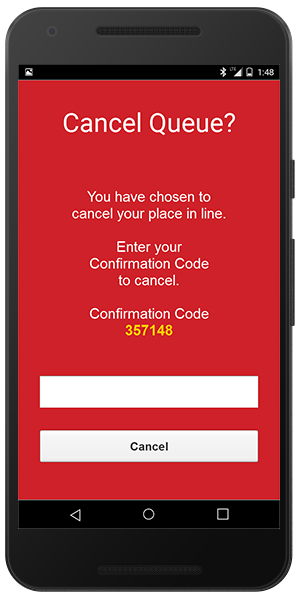
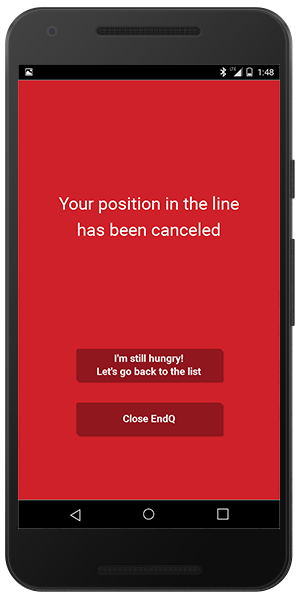
CONCLUSION
With ever increasing demands on their time, patrons refuse to wait for service. Others wait but will refuse to return, as long wait times may simply cause them to seek out another establishment. The downside for the restaurant, is lost revenue - all to the tune of $14 Billion, annually.
EndQ can help to align a business' needs with the needs of customers by allowing patrons to arrive on-site and skip the wait, giving them back their time without losing their business.